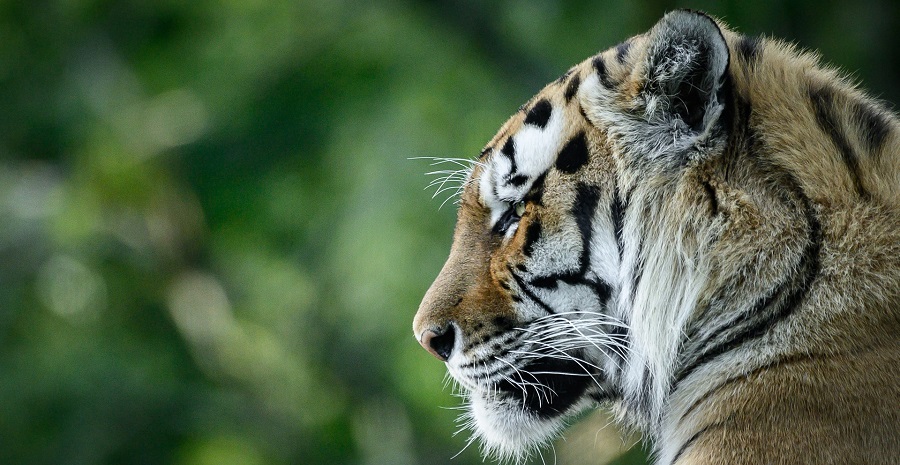Tigers, known as Panthera Tigris, are the biggest of the four big cats in the Panthera genus and are the members of the Feludae family. One of the world’s highly recognised charismatic mega fauna, these big cats are mostly the natives of southern and eastern Asia. India is a typical tiger country harbouring the highest population in the world. Tigers are the central attraction of the national parks, where wildlife enthusiasts spend quite a lot of time to get at least a single glimpse.
Prior to entering the tiger territories, an acknowledgement regarding their personality, behaviour and social structure is considered necessary.
The powerful and elegant tigers of India, with full of royalty and self-confidence walks through the forests emit an electrifying aura. Once it finds its prey, it charges towards it with utmost focus and a burning intensity. The bodily and preying features are very aptly stated by the poet William Blake in the poem ‘The Tyger’ of his collection ‘Songs of Experience’ -
“Tyger Tyger, burning bright,
In the forests of the night;
What immortal hand or eye,
Could frame thy fearful symmetry?”
Territorial mannerisms and social behaviour
Tigers essentially remain particular about their territory and prefer to be the solitary ones in their marked area. According to several studies, male tigers acquire larger areas than female tigers, and sometimes the male ones tend to overlap their territories with the females. Although there does not exist any particular set of rules to be followed by every tiger. Or instance, tigers do not prefer to share their territorial boundaries with others. However, sometimes they can be spotted sharing their hunted feast with female tigers or cubs. Male tigers are more reluctant to share their areas with other males as compared to female tigers with other females. Tigresses have the tendency to mark their dominion close to their mother’s land, whereas the fact is the opposite in the case of the male big cats. The male tigers get aggressive and offended by the increased tiger density neighbouring their territories. They take it as a challenge and competition on the grounds of hunting and mating.
Hunting behaviour
Tigers, among the finest predators, generally tend to hunt during the nighttime. They mostly prey upon large to medium-sized animals such as gaur, sambar, nilgai, chital, boars, sloth bears, crocodiles, and even sometimes pythons and leopards. Rhino and elephant calves also fall prey to these majestic beasts.
Wounded or aged tigers, those who become incapable of catching their own prey, usually turn into man-eaters. In Sundarbans, the man-eaters most often prey upon villagers and fishermen. Tigers are competent swimmers and runners but are not very good at climbing. After coming quite close to their prey, they suddenly jump on them, overpowering the prey with their unbeatable strength. While hunting a larger animal, they first bite their throat to strangulate and kill them.
Others
Other behaviours of the tigers encompass their individual attitude, daily activity cycle and interaction with other species. The tigers use their rasping tongue to clean and condition their fur with the oil that secretes from their glands.
According to recent survey reports, the forests of Madhya Pradesh house the largest tiger population in India, making the count to 785. India has observed an annual increase of 6.1% in the tiger population, as stated by Ashwini Kumar, the Minister of State for Environment, Forest, and Climate Change on Global Tiger Day (July 29, 2023). Plan a Kanha Tiger Tour, or a visit to Pench National Park, Bandhavgarh National Park and Satpura National Park, the popular national parks in Madhya Pradesh for a tiger sighting vacation.



